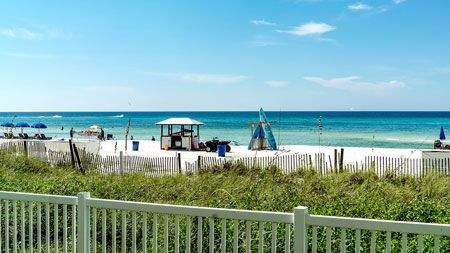Beach Renourishment in Panama City Beach

The Panama City Tourist Development Council has voted to recommend the Weeks Marine company be awarded the beach renourishment project. On January 4, the council voted to approve the company for the project and increase the project budget to $17 million, up from $12 million. The final vote will be held by the Bay County Commission.
The project will add 900,000 cubic yards of sand to four beachfront areas, including Pinnacle Port, the Calypso condominium to the Tidewater Beach Resort area, Treasure Island Resort Condominiums, and the County Pier/Chateau Motel area. Work is expected to begin early in the spring with a projected May 1 completion date.
A History of Panama City Beach Renourishment Projects
Though the project will add new beach property, this is not the first renourishment project undertaken by Panama City Beach. Many of the beachfront areas that exist now are the result of three previous additions. The first, between 1998 and 1999 was done in response to erosion caused by Hurricane Opal in 1995. Approximately 9.8 million cubic yards of sand was needed to repair the damage.
Two more renourishment projects between 2005 and 2011 added more sand as storms continued to erode the beaches. Nearly 5 million cubic yards of sand were added over the two projects. These smaller projects along with the current proposal maintain the beach infrastructure that protects beachfront properties to the benefit of residents and visitors alike. In addition, the project provides habitat for wildlife, such as nesting grounds for sea turtles.
Where Do They Get the Sand?
The large amounts of sand that are required for renourishment projects comes from offshore, harvested from permitted borrow areas. It is not as simple as dredging the sea floor, however. Coastal Engineers have to identify areas where sand matches the composition, color, and size to allow a natural blending with the existing sand.
How Are Beach Nourishments Funded in Panama City Beach?
Renourishment projects are massive undertakings, requiring cooperation through a partnership on the local, state, and federal levels. Local money comes from a dedicated renourishment fund. This fund is paid for by the Third Cent Bed Tax, a hospitality tax paid primarily by tourists and other short-term visitors who make use of the various hotels and condominiums in the area.
- Created on .
- Last updated on .
- Hits: 7434